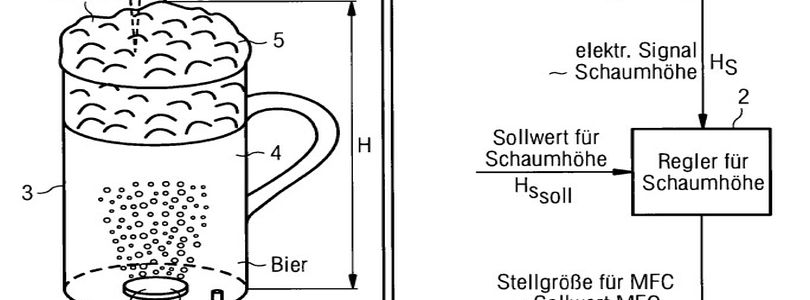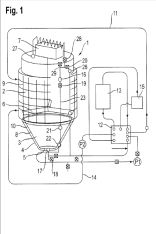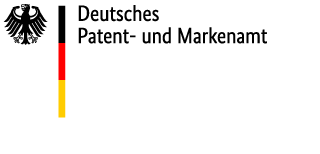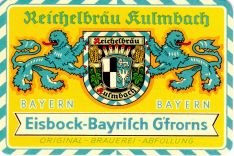Inhalt
International Beer Day

Serious drinking: Beer and IP
August 2nd is International Beer Day. One could take this as an occasion to drown a couple of pints (the initiators probably did not have much more in mind either) - or to take a serious look at the property rights around an ancient cultural asset that is constantly being further developed.
Although breweries often value their traditions high, today state-of-the-art technology is behind one of the oldest drinks in human history. This is demonstrated not least by the large number of patent applications relating to the brewing process filed at the DPMA. The oldest brewing recipe is about 5000 years old - some of the most recent inventions on beer received by the DPMA include "Aparratus and method for efficient cooling in breweries" ( ![]() WO002019048662A1 (1,56 MB)) or ("Verfahren und Vorrichtung zur Anschwemmfiltration eines Unfiltrat",
WO002019048662A1 (1,56 MB)) or ("Verfahren und Vorrichtung zur Anschwemmfiltration eines Unfiltrat", ![]() DE102017100640A1).
DE102017100640A1).
Although the ancient Sumerians and Egyptians already brewed beer, although the Celts already knew different varieties and although the Purity Law is already 500 years old - there is still a lot of work going on to optimize beer production.
New inventions in the field of brewing

Logo of 2018. Maybe the initiators got a little too much of it last year because they´ve not been working on their website ever since...
One example is the "process for time-optimized maturing of beer for export overseas" ( ![]() DE102016006270A1): the beer matures on board the transport ship using special transport containers. This enables the brewery to get its fresh beer on its way more quickly without having to artificially shorten the maturing time in the brewery for cost reasons or having to conserve the beer in order to prepare it for the long journey overseas.
DE102016006270A1): the beer matures on board the transport ship using special transport containers. This enables the brewery to get its fresh beer on its way more quickly without having to artificially shorten the maturing time in the brewery for cost reasons or having to conserve the beer in order to prepare it for the long journey overseas.
The eye drinks too: For many beer connoisseurs a beautiful head of foam is important. ![]() DE102010030284B4 therefore proposes a new "process and arrangement for stabilizing the foam of beer".
DE102010030284B4 therefore proposes a new "process and arrangement for stabilizing the foam of beer".
An important trend in recent years has been towards non-alcoholic or low-alcoholic beer, the taste of which is still being optimized, for example with the "process for reducing the alcohol content" ( ![]() EP2921550B1).
EP2921550B1).
Further current applications optimize the brewing with "high gravity blending processes" ( ![]() WO002015049353A1) or are simply called "Process for the production of beer" (
WO002015049353A1) or are simply called "Process for the production of beer" ( ![]() WO002013102644A1). Inventors develop "New production machines for the production of beer (...) without the previously used technical equipment and components" (
WO002013102644A1). Inventors develop "New production machines for the production of beer (...) without the previously used technical equipment and components" ( ![]() DE202016000870U1) or new "processes and equipment for tapping and/or producing beer" (
DE202016000870U1) or new "processes and equipment for tapping and/or producing beer" ( ![]() DE102016107729A1).
DE102016107729A1).
Even a process that is thousands of years old can apparently be further optimized...
Beer thirst decreases, diversity increases

"Process for the production of beer“(WO 002015049353A1)
The demand is there: in 2018, German breweries sold a total of around 94 million hectoliters of beer, which is an increase of about 0.5 &.
However, beer sales have been going down for several years now. According to the Federal Statistical Office (![]() Destatis ), total beer sales have fallen by 18.6 million hectolitres or 16.6% since 1993.
Destatis ), total beer sales have fallen by 18.6 million hectolitres or 16.6% since 1993.
In Bavaria, 2018 was a godo year for breweries thanks to the hot summer: 24,5 million hectoliters of beer were drowned in the Free State last year.
"Bavarian beer" is protected at the DPMA as a geographical indication of origin (312012000102.4) and can therefore be marketed as a regional speciality, similar to Parma ham or champagne.
Who can take the most?
Despite lower thirst, Germans still drink more beer than the rest of the world, about 94,2 litres per capita in 2018. Only the Czechs can do more: with an average of 143 litres of beer, they were ahead by far in 2017 and thus alone at the top worldwide.
But Germany - and Bavaria in particular - is at the top in terms of diversity: there are supposed to be up to 6,000 different German beer varieties - and the trend is rising sharply. That means you could try a different German beer every day for 16 years. If you search in DPMAregister for all trade marks in the "beer" section, you will get 60.000 results! Many beer brands have expired (such as the "Münchner Schlossbräu"), but new brands are constantly being added.
More than 1500 breweries in Germany!
In 2018, 1,539 breweries were active. According to ![]() Destatis, 654 breweries, or 42% of them, were located in Bavaria. The smallest breweries with annual production of less than 1,000 hectolitres are developing particularly dynamically. In 2017, the 824 small and smallest breweries accounted for more than half of all breweries in Germany; their number alone has increased by 85 compared to 2016.
Destatis, 654 breweries, or 42% of them, were located in Bavaria. The smallest breweries with annual production of less than 1,000 hectolitres are developing particularly dynamically. In 2017, the 824 small and smallest breweries accounted for more than half of all breweries in Germany; their number alone has increased by 85 compared to 2016.
The worldwide trend towards "craft beer" and "micro breweries" is benefiting many small traditional companies. By the way, the hop growers, too: As heavily hopped beers (e.g. "Imperial Pale Ale") are becoming more and more fashionable, the demand for the plant continues to rise.
In addition to the International Beer Day, which has been celebrated every first Friday in August since 2008, there is also a ![]() German Beer Day. It takes place on 23 April to commemorate the Bavarian state order of 23 April 1516, which stipulates that only hops, malt, yeast and water should get in beer - the birth of the German Purity Law. Cheers!
German Beer Day. It takes place on 23 April to commemorate the Bavarian state order of 23 April 1516, which stipulates that only hops, malt, yeast and water should get in beer - the birth of the German Purity Law. Cheers!
www.idb.com
Stand: 08.10.2024



Soziale Medien